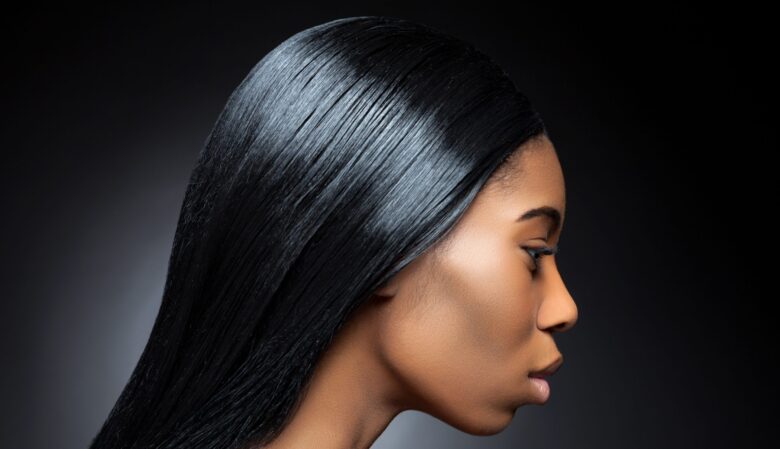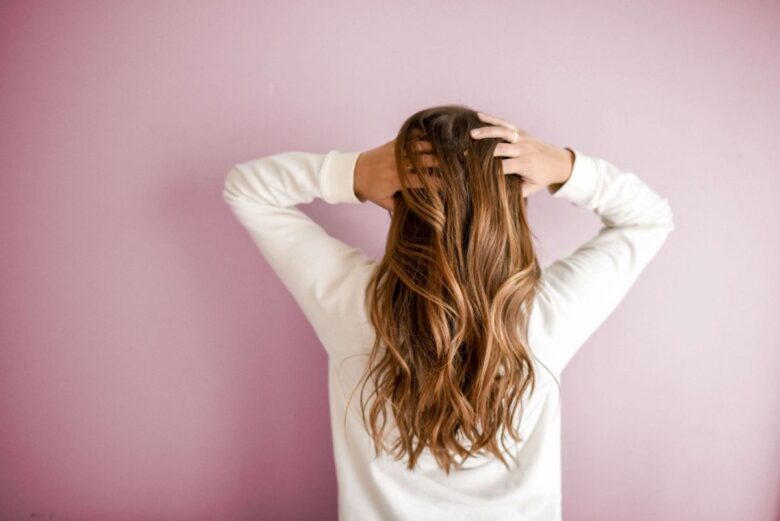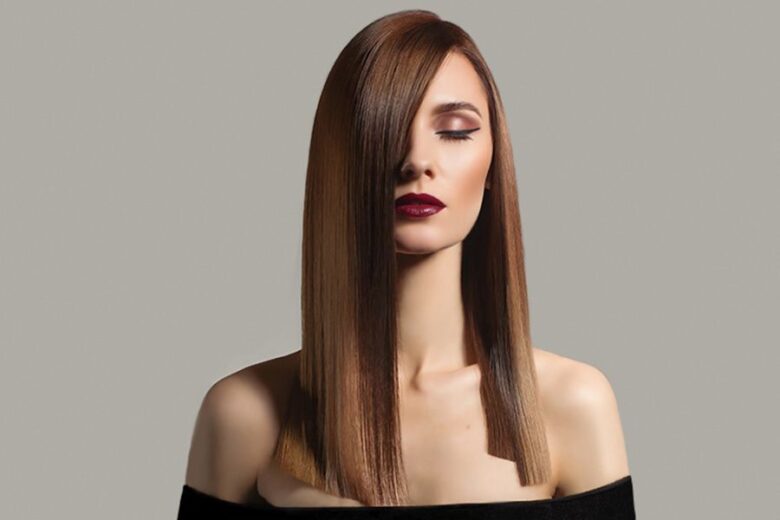Managing tight curls and waves can be a challenging task for many, making hair relaxers an appealing option. These powerful chemical concoctions promise to tame stubborn tresses or simply give you a new look, giving you sleek and smooth hair that is easier to handle.
However, while their transformative capabilities are no secret, the hidden implications of using these products often get overlooked. Their high chemical concentration can turn detrimental if not used correctly, potentially leading to severe hair damage or even permanent loss.
This guide provides insights into the world of hair relaxers and steps for their safe use because understanding what you use on your hair is just as essential as finding a product that works.
Contents
What are Hair Relaxers?
Hair relaxers can be considered a lifesaver for those finding it hard to manage and style curly, coiled, or kinky hair. They are powerful chemical products designed specifically to straighten hard-to-style hair types by altering the texture. This effect is achieved by breaking down the hair’s natural structure and then reshaping it in a more relaxed or straight manner.
The result? Smooth, sleek tresses that can be easier to comb through and style. However, if wrongly used or overused, these revolutionary beauty aids can cause hair damage. Thus, while they offer convenience for many people, caution should practically always precede use.

Source: brandonessentials.com
What are the Risks of Using Hair Relaxers?
A study in the National Library of Medicine found that adverse effects reported from chemical hair relaxers are common and were as high as 95.56%. This means that a person who uses chemical relaxers is almost guaranteed to experience a multitude of side effects.
According to the mentioned study, you’re likely to experience:
- Frizzy hair 67% of the time
- Dandruff 61% of the time
- Hair loss 47% of the time
- Thinning and weakening of hair 40% of the time
- Graying of hair 22% of the time
- Split ends 17% of the time
A study that looked at uterine cancer risk in women who have used chemical hair relaxers found that there’s a connection. Black women are more likely to be affected, as they’re the group that uses chemical hair relaxers the most. If you were diagnosed with uterine cancer after using chemical hair relaxers, you can join a class action case, like the L’Oreal hair relaxer lawsuits.
As you can see, there are many risks involved with using hair relaxers, but is it possible to use them safely? That depends on the type of relaxer you use and how you use the product.
Can You Use Chemical Hair Relaxers Safely?
Many chemical hair relaxers contain lye (sodium hydroxide), a substance found in paint thinners and oven cleaners. While these relaxers are the strongest and most effective for oily hair, lye is an incredibly corrosive substance and has been linked to certain types of cancer.
However, there are other types of relaxers, including:
- Calcium Hydroxide: Suitable for sensitive scalps but has a drying impact on the hair that could be more caustic (burn or corrode) if left on for a prolonged period.
- Ammonium Thioglycolate: Best for curly hair and has fewer side effects.
- Guanidine Carbonate: These are no-lye relaxers that are considered the safest to use. Though they’re weaker, you should still follow directions to avoid damage.
While it’s preferred that you don’t relax your hair, there are safer ways to do it, including choosing a different relaxer. In the next section, we’ll look at how to use these products safely.

Source: medium.com
How Can You Use Chemical Hair Relaxers Safely?
Despite all the risks involved with straightening your hair, there are ways that you can protect your hair and scalp from becoming damaged. Here are a few ways you can do just that.
Follow Package Directions
Following the package directions should never be neglected or underestimated. These instructions are there for a reason: to guide you through the process of achieving the desired result without causing harm to your hair or scalp. Misuse can damage the hair and scalp.
Wear Gloves When Applying Product
These products contain potent chemicals that can irritate or even burn your skin upon direct contact. By wearing gloves, you’re giving your hands a reliable layer of protection against these harsh substances. Furthermore, gloves can also prevent accidental slips or spills.
Do a Small Patch Test
A patch test involves applying a tiny amount of the product to an inconspicuous part of your scalp to assess your skin’s reaction. Some individuals may have sensitivities or allergies to ingredients in the formula that could cause reactions such as redness, itching, or even blisters.

Source: secretspa.co.uk
Don’t Double Process Hair
Double-processing your hair means subjecting it to two different chemical treatments in a short period. Hair relaxers alone can weaken the hair’s protein structure, making it more susceptible to damage. When combined with another process, it increases the chance of damage.
Don’t Use on Unhealthy Hair or Scalp
If your hair is already damaged or if you have a scalp condition like psoriasis, eczema, or even just dryness and flaking, then the chemicals in a relaxer can exacerbate these problems. The potent substances found in relaxers can potentially lead to hair thinning or breakage.
Don’t Leave it on Longer Than Recommended
It can be tempting to leave a hair relaxer on for longer than indicated by the instructions in the hopes of achieving better results. However, this is a risky move. The chemicals in hair relaxers are very potent, and extending their use can lead to severe scalp irritation or excessive dryness.
Don’t Use Relaxers More Than Four Times a Year
Regularly using hair relaxers can cause significant damage to your hair and potentially lead to permanent harm. Therefore, it’s recommended to limit their usage as much as possible. For instance, strive not to use relaxers more than four times a year or even less if possible.

Source: glaminati.com
In Conclusion…
It’s clear that hair relaxers, while solving some hair woes, come with their own set of risks. But armed with the right information and a cautious approach, they can be a valuable tool in your hairstyling arsenal. Stay tuned to our page for more tips and advice on managing your hair.
